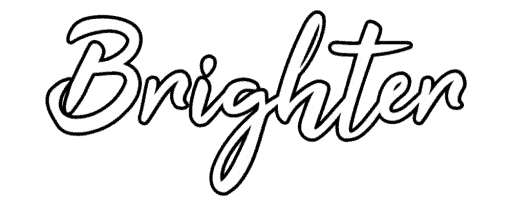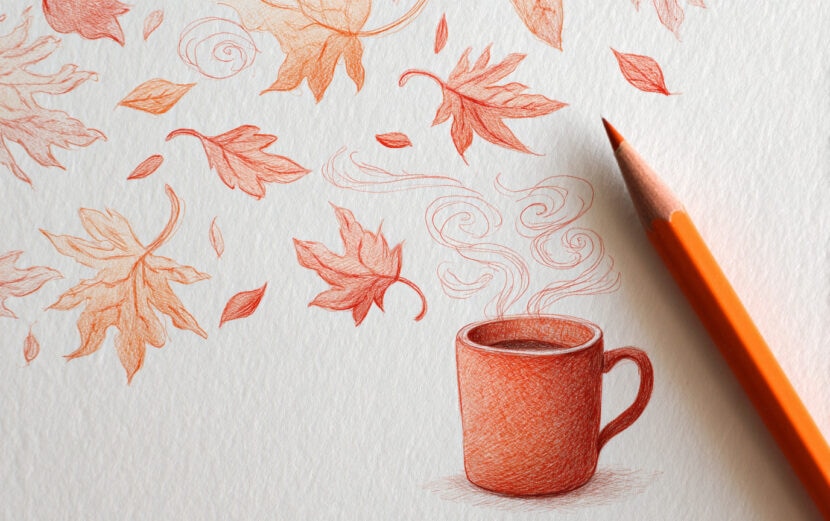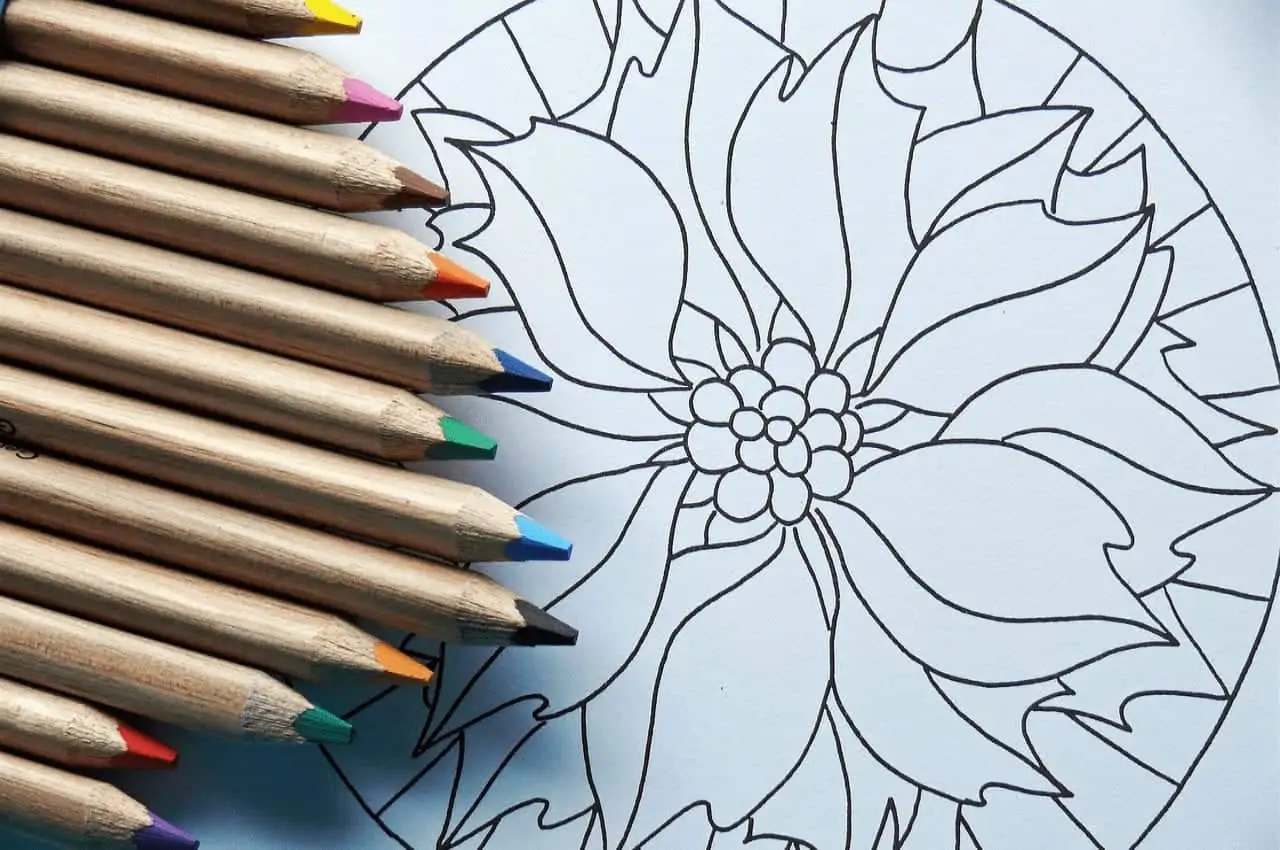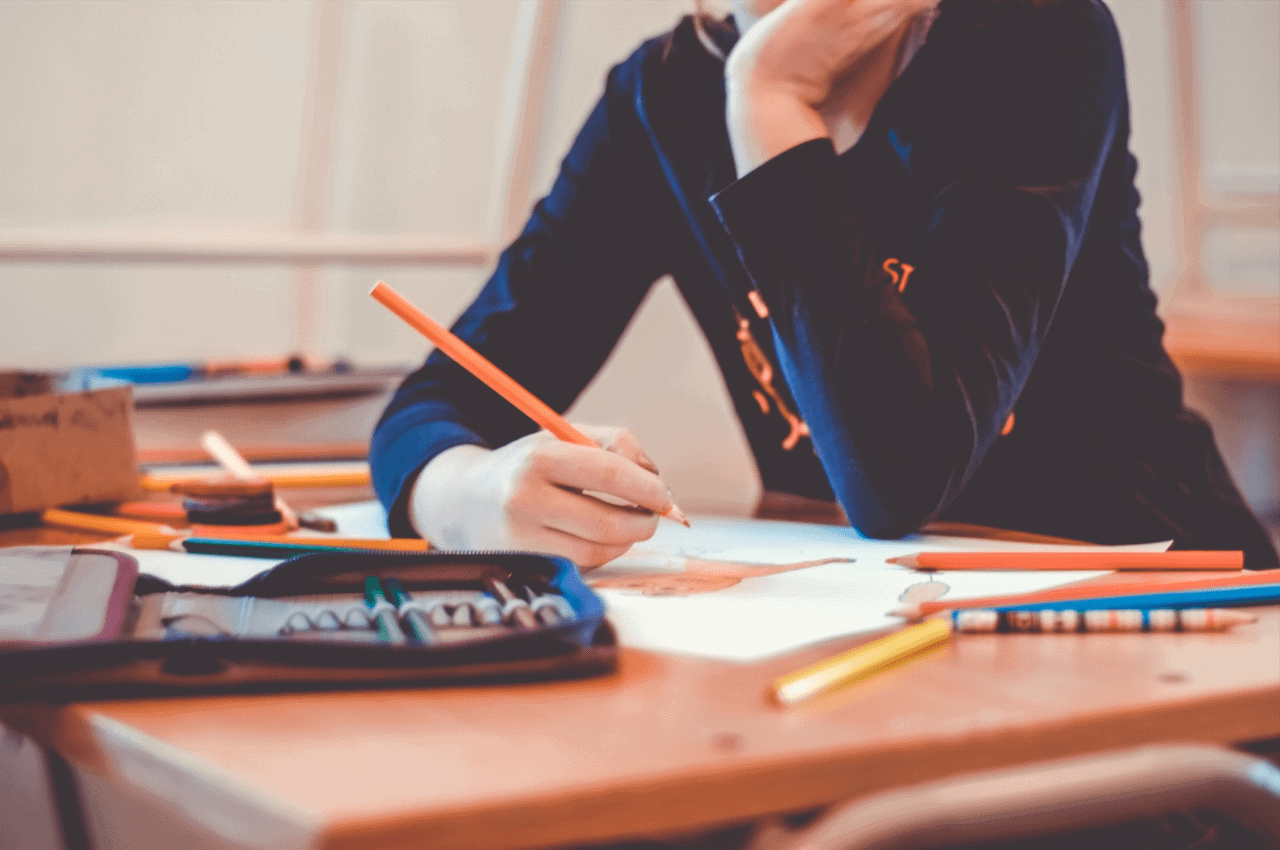Cute autumn doodles saved my sketchbook from looking like a graveyard of abandoned “serious” drawings. You know how it goes – you start a detailed landscape, get frustrated halfway through, and then that half-finished mess just sits there judging you every time you flip past it. Doodles are the opposite of that. They’re quick, they’re forgiving, and if one turns out weird, you just draw another one right next to it.
I stumbled into autumn doodles kind of by accident. It was October, I was bored during a phone call, and I started drawing a little pumpkin in the margin of my notebook. Then I added a face to it. Then I drew a tiny scarf on it because why not? By the time my call ended, I had a whole row of pumpkins doing various autumn activities, and honestly, they made me happier than any of the “proper” drawings I’d been struggling with that week.
All artwork provided is original and can be used as a reference for your own drawings.
Table of Contents
Why Doodles Are Actually Practice (Even Though They Don’t Feel Like It)
Here’s something nobody tells beginners: doodling builds the same skills as serious drawing, just without the pressure. When you’re doodling a cute acorn wearing a tiny hat, you’re still making decisions about proportion, shape relationships, and how lines work together. Your brain is learning, but it doesn’t feel like homework because you’re just having fun with a silly acorn character.
I used to feel guilty about doodling. Like, shouldn’t I be working on my perspective? Practicing anatomy? Studying color theory? Then I noticed something weird – after a few weeks of just goofing around with autumn doodles during my lunch breaks, my “serious” drawings started getting better. The lines were more confident, the proportions felt more natural, and I wasn’t second-guessing every mark.
Turns out, low-stakes repetition is how you actually learn. Who knew?
The Autumn Doodle Advantage
Everything Is Already Cute Fall stuff is inherently adorable. Acorns? Cute. Pumpkins? Cute. Leaves? Also cute. You literally cannot fail at making autumn subjects charming. Even if your pumpkin looks a bit wonky, guess what – real pumpkins are wonky too. You’re just being authentic.
Compare this to trying to doodle, say, a motorcycle or a realistic portrait. Those have actual expectations attached. A bad motorcycle doodle just looks like you can’t draw motorcycles. A lumpy pumpkin doodle looks like you drew a character with personality.
The Color Palette Is Pre-Approved One of the most stressful parts of drawing is picking colors. Do these go together? Is this too much? Not enough? With autumn doodles, you can basically throw oranges, reds, yellows, and browns at the page and it automatically looks intentional. It’s like nature already did the color planning for you.
I spent years intimidated by colored pencils because I could never figure out what colors to use together. Then I bought a basic autumn-colored set (literally called “Autumn Leaves” or something), and suddenly coloring was easy. Anything warm = automatically cohesive autumn palette. Revolutionary.
They Tell Stories Without Trying A random circle with dots is just… a circle with dots. A pumpkin with dots becomes a character with freckles. Same amount of effort, way more personality. Autumn objects come with built-in narrative potential – acorns are collecting things, leaves are falling, pumpkins are… pumpkin-ing. You don’t have to work hard to make them interesting.
Woodland Mushroom Village
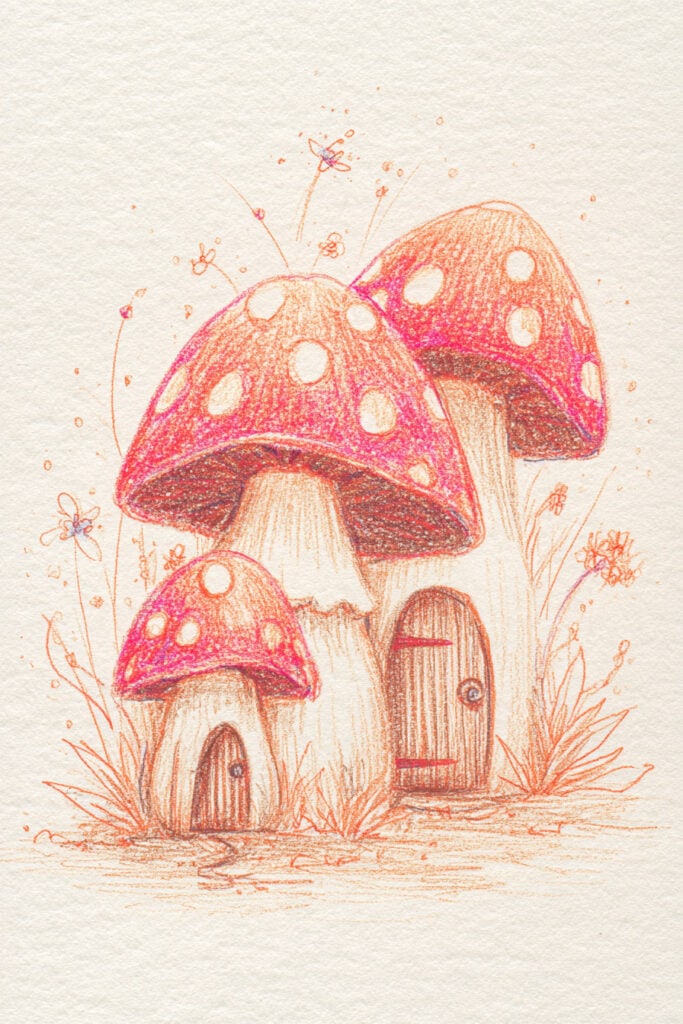
Thanksgiving Turkey
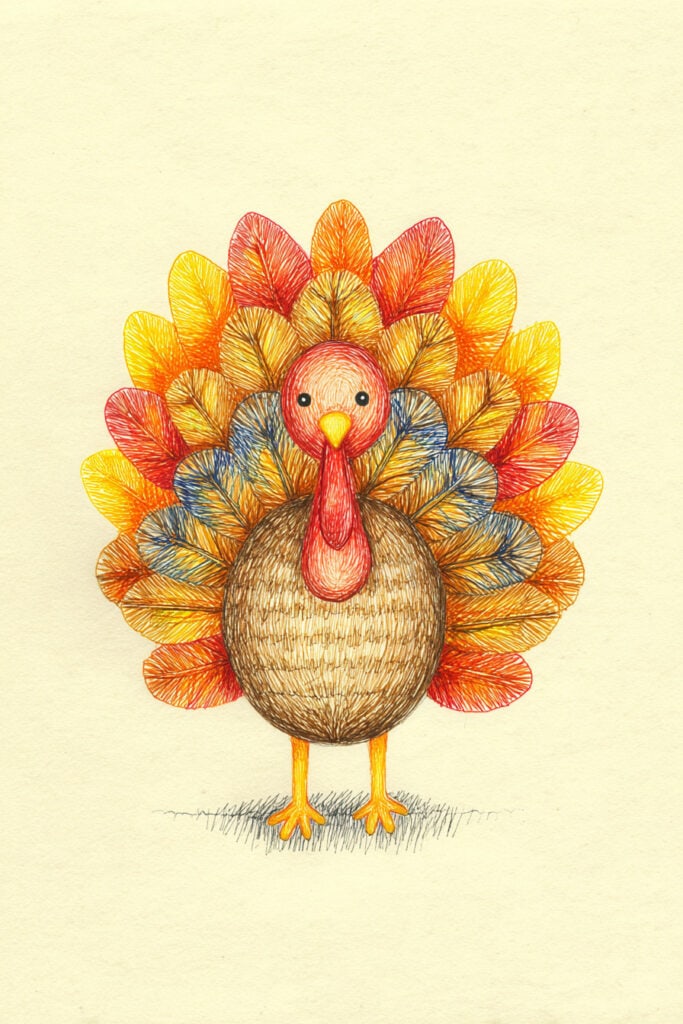
Sweater Weather Sheep
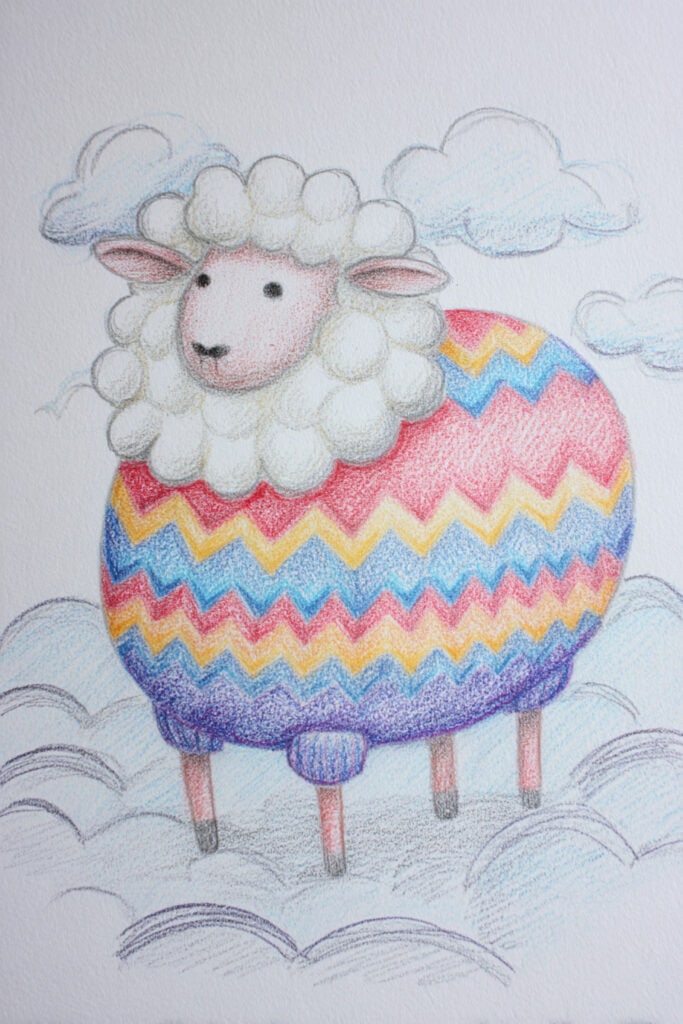
Squirrel with Acorn Stash
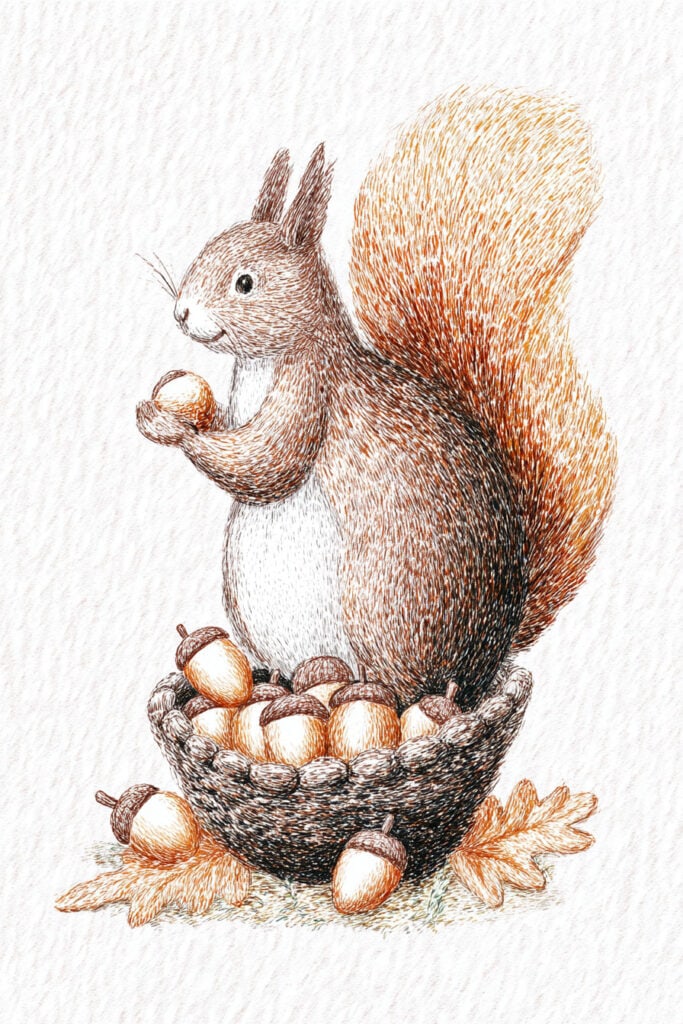
Smiling Acorns
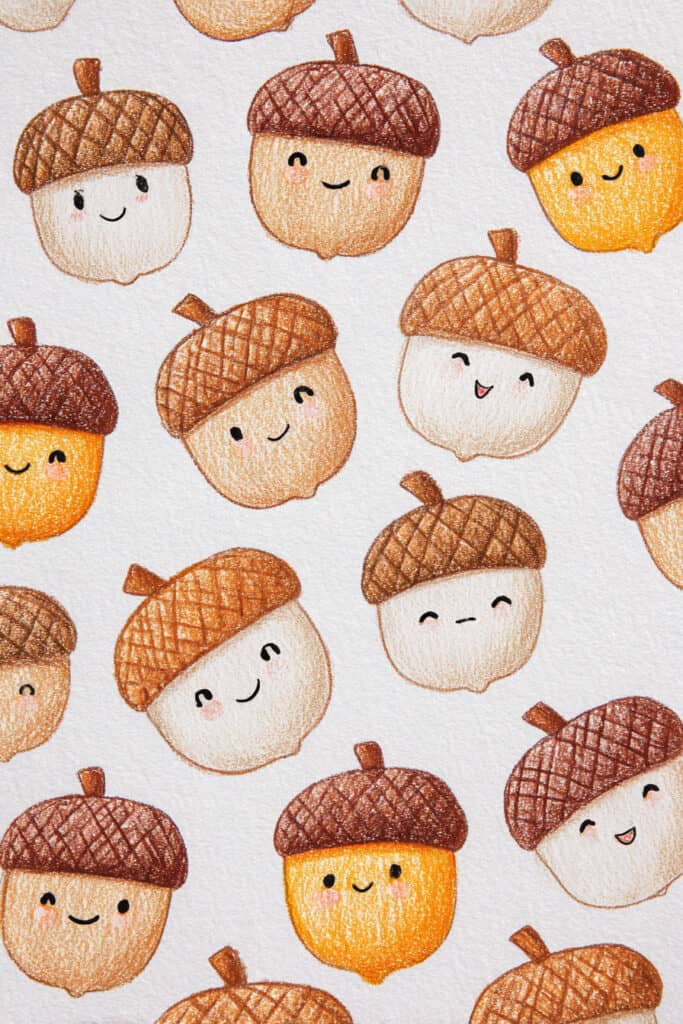
Sleepy Hedgehog in Leaves
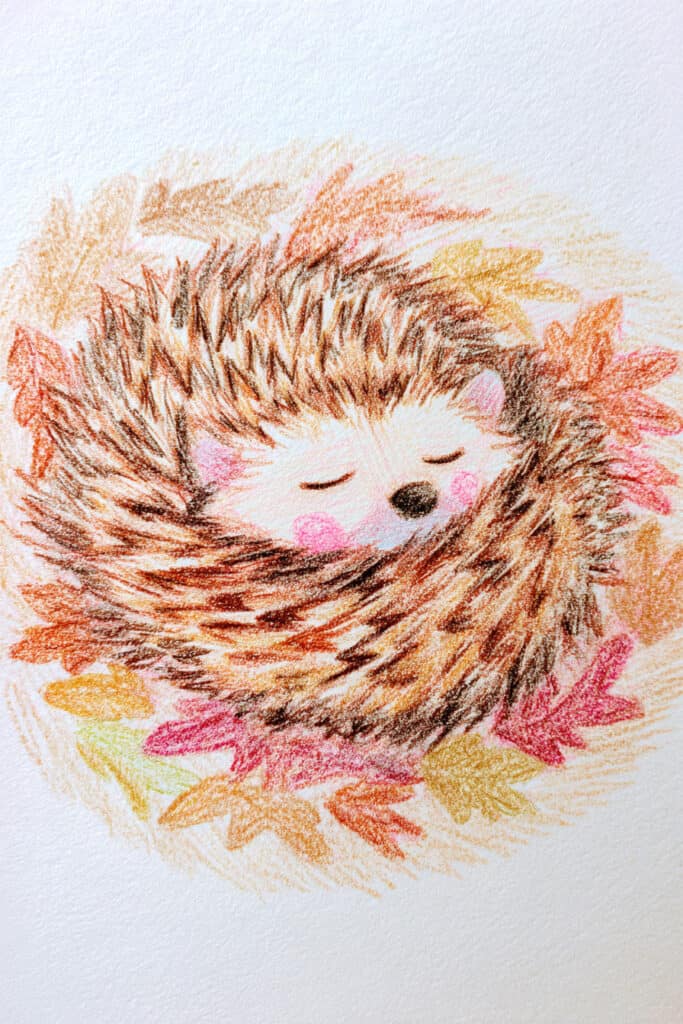
Scarecrow Friend
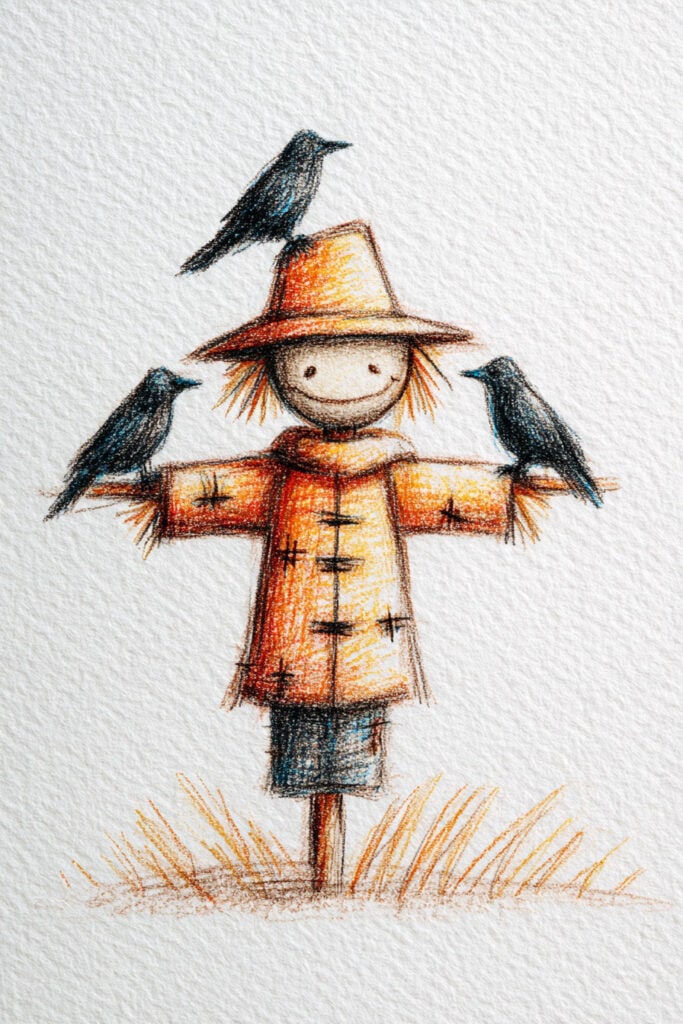
Pumpkin Spice Latte Love
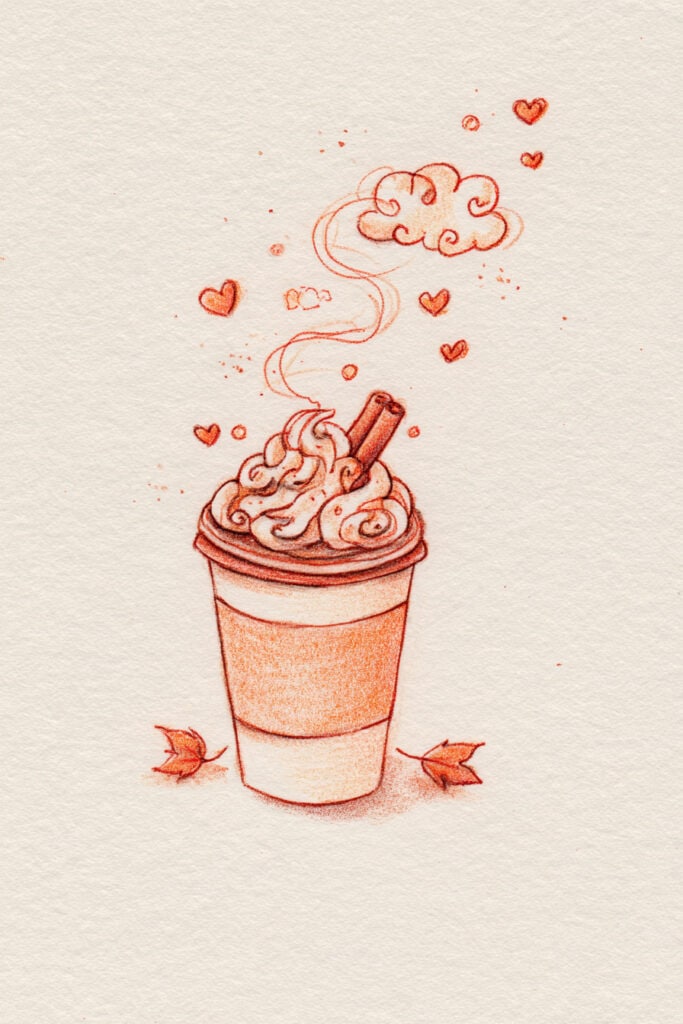
Pine Cone Buddies
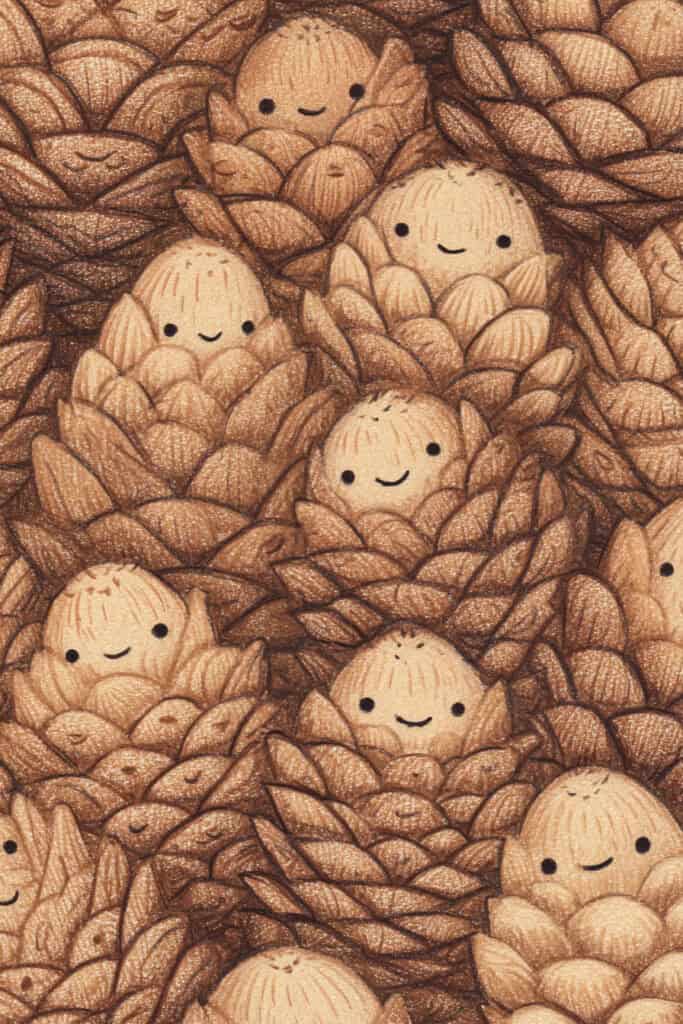
Lazy Sunday Cat in Leaves
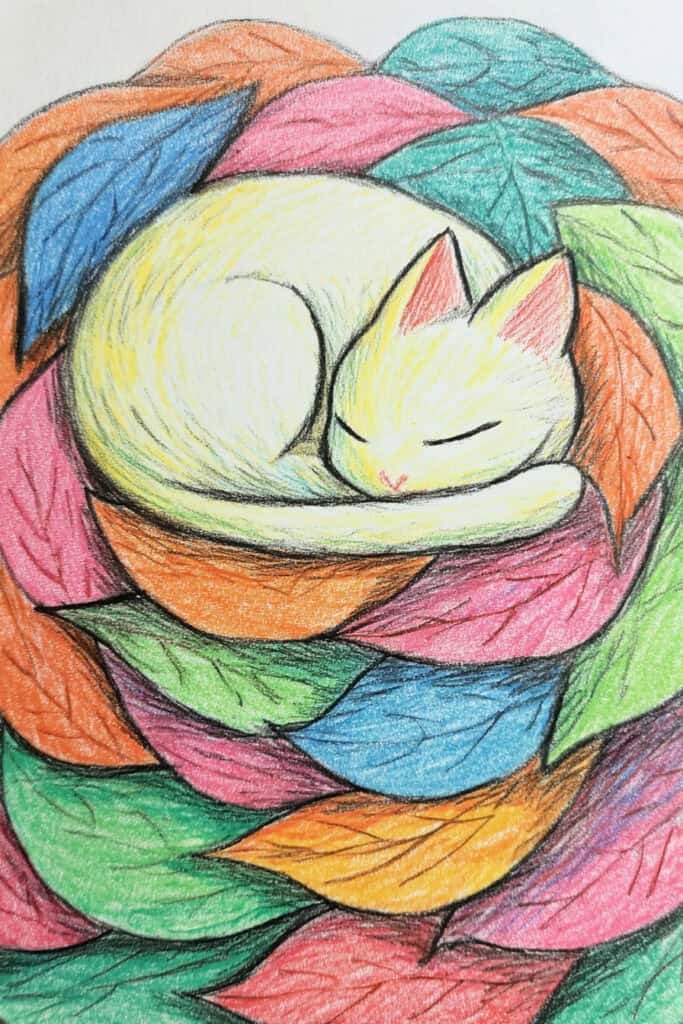
Kawaii Pumpkin Patch
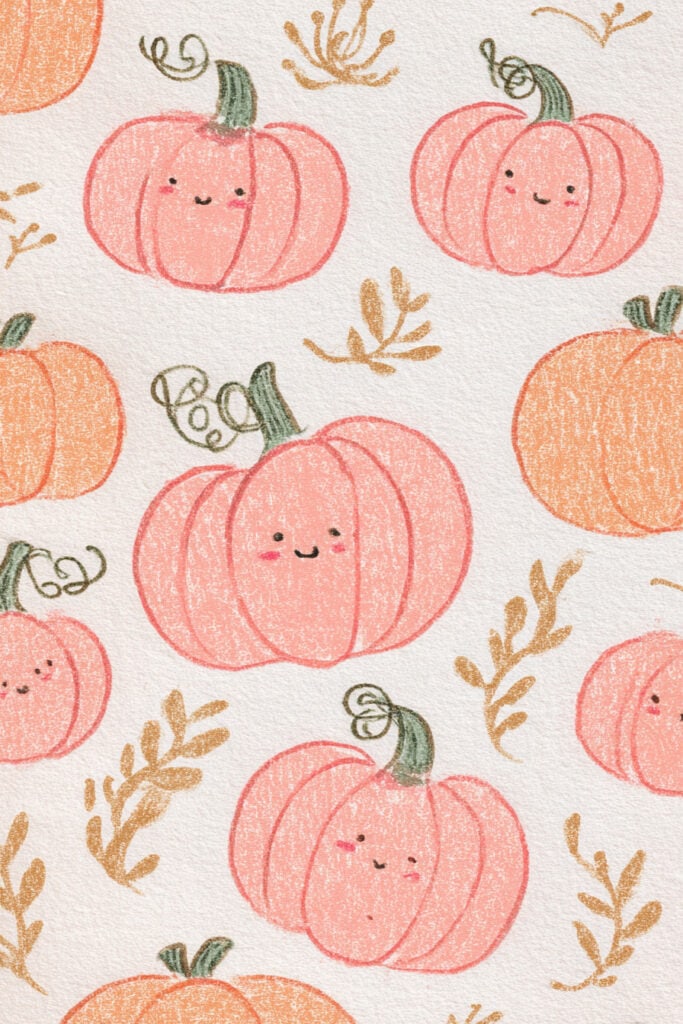
Hot Cocoa Marshmallows
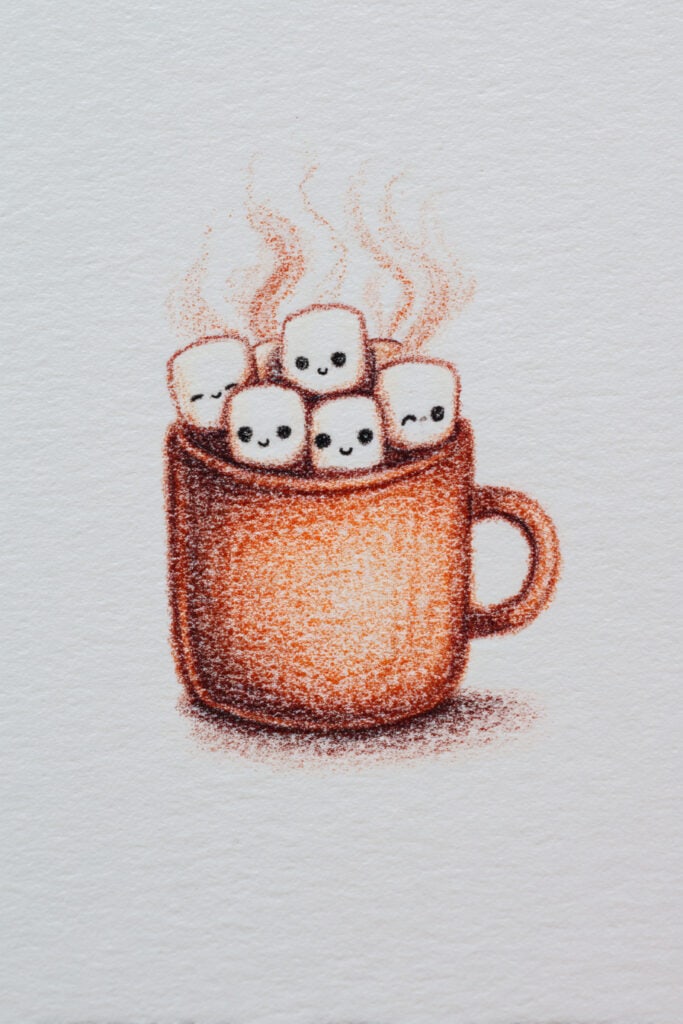
Harvest Moon
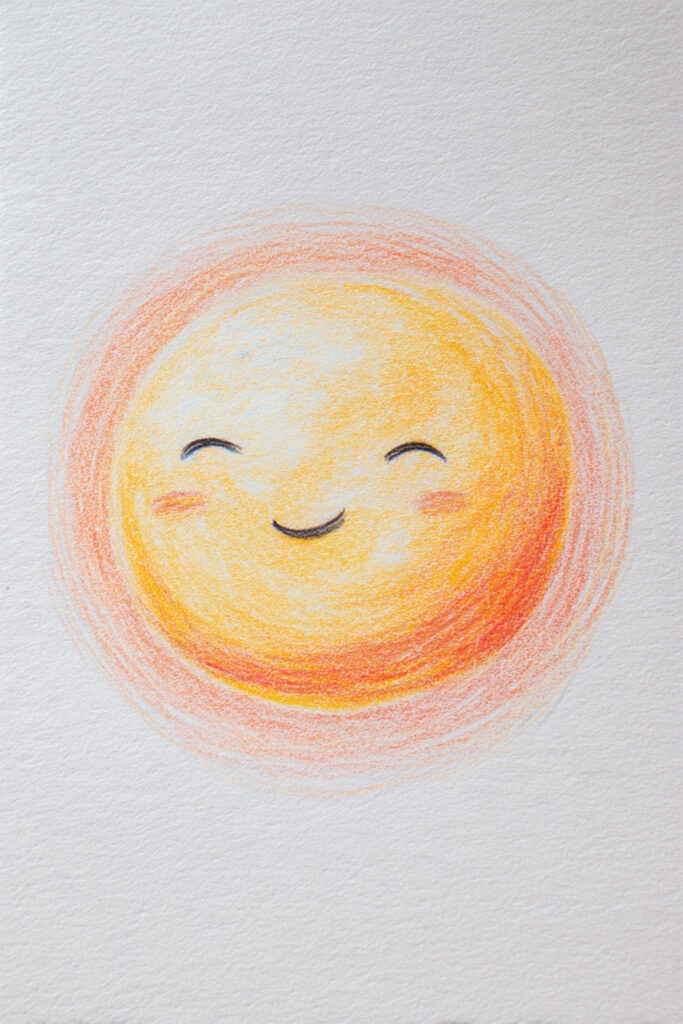
Flannel Shirt Pattern
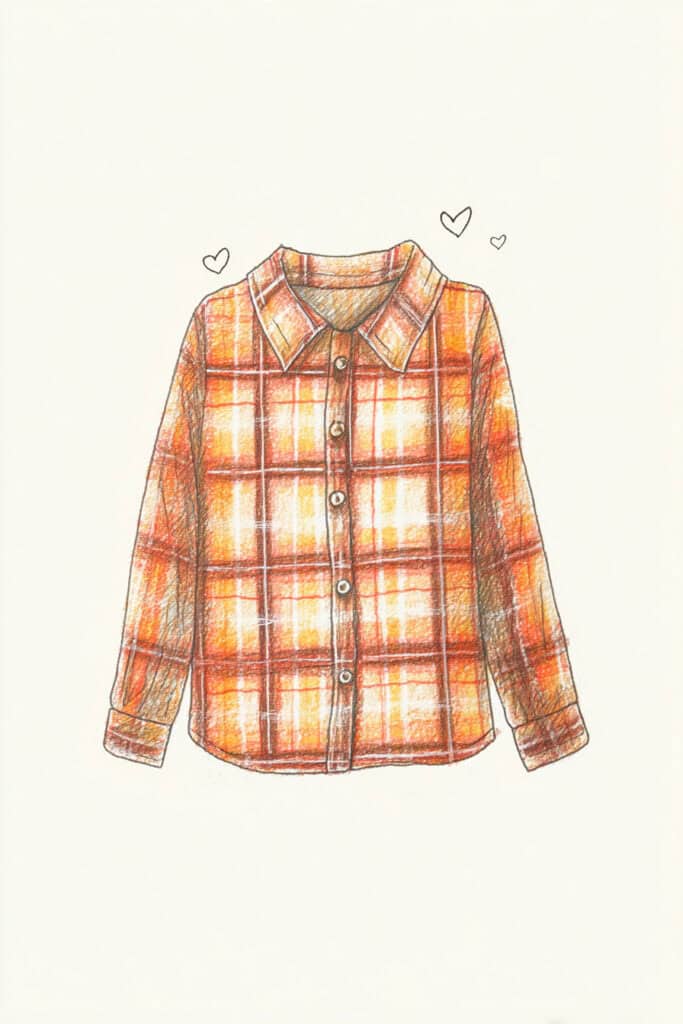
Dancing Autumn Leaves
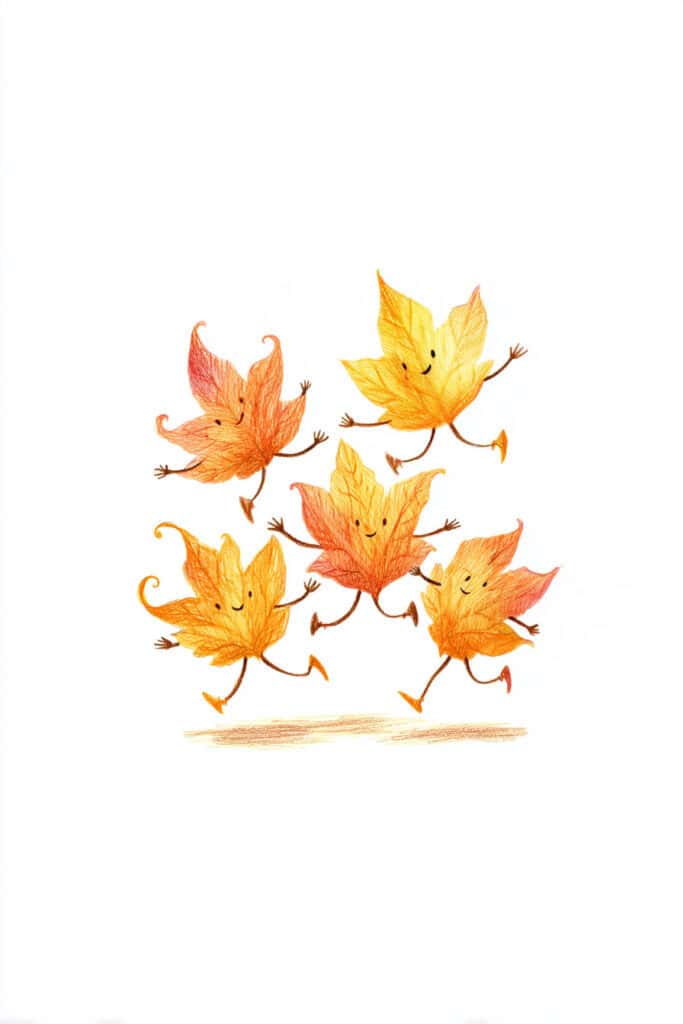
Cute Fox in Scarf
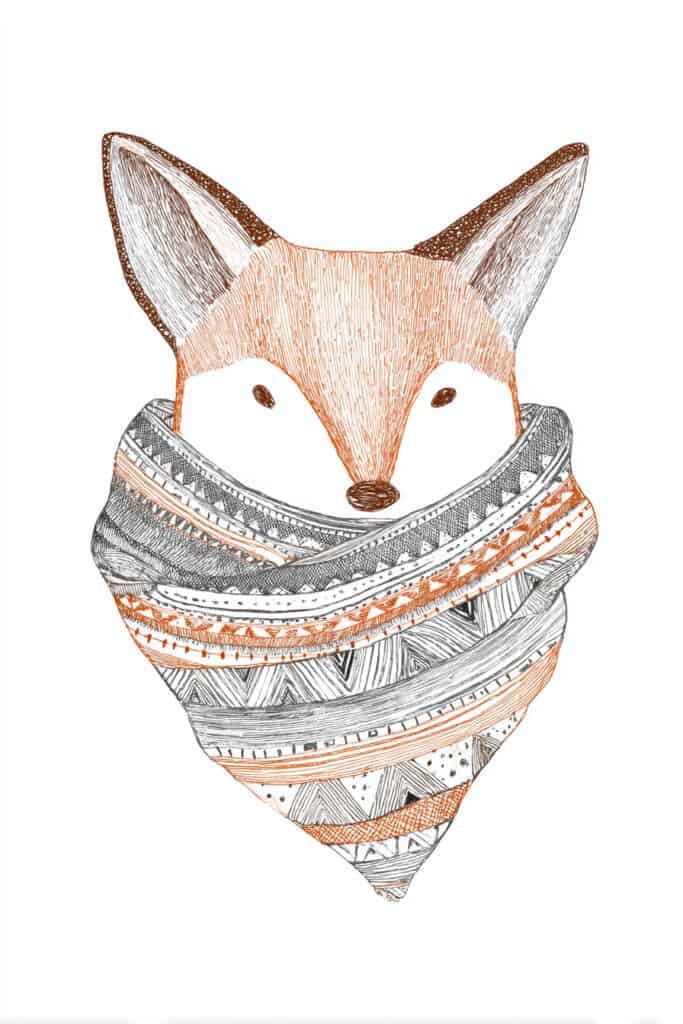
Cozy Reading Nook Corner
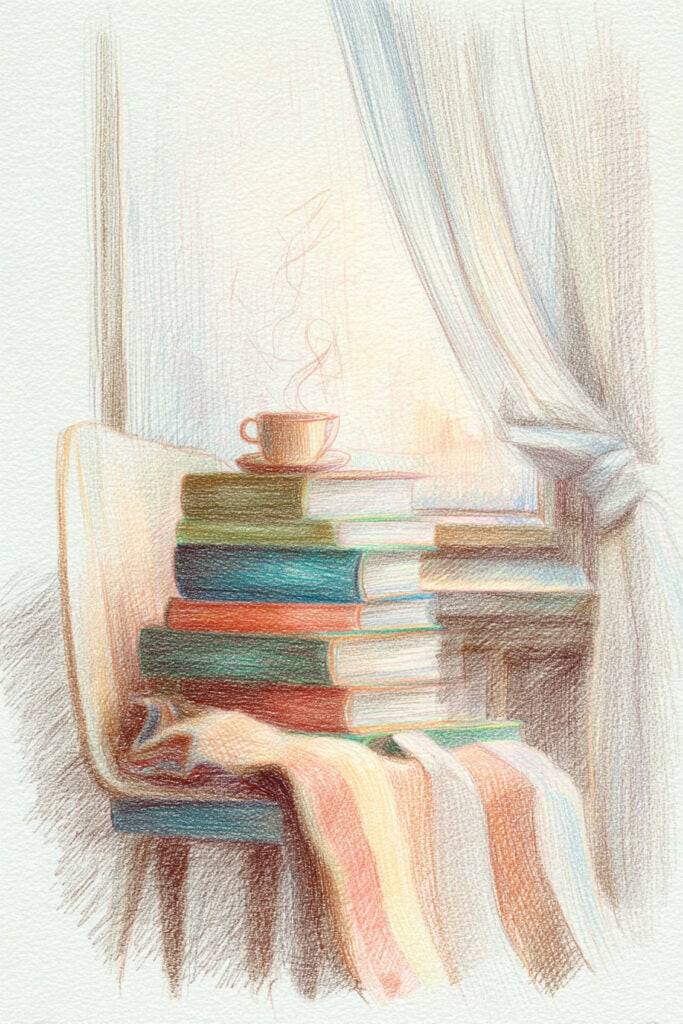
Cozy Coffee Cup with Leaves
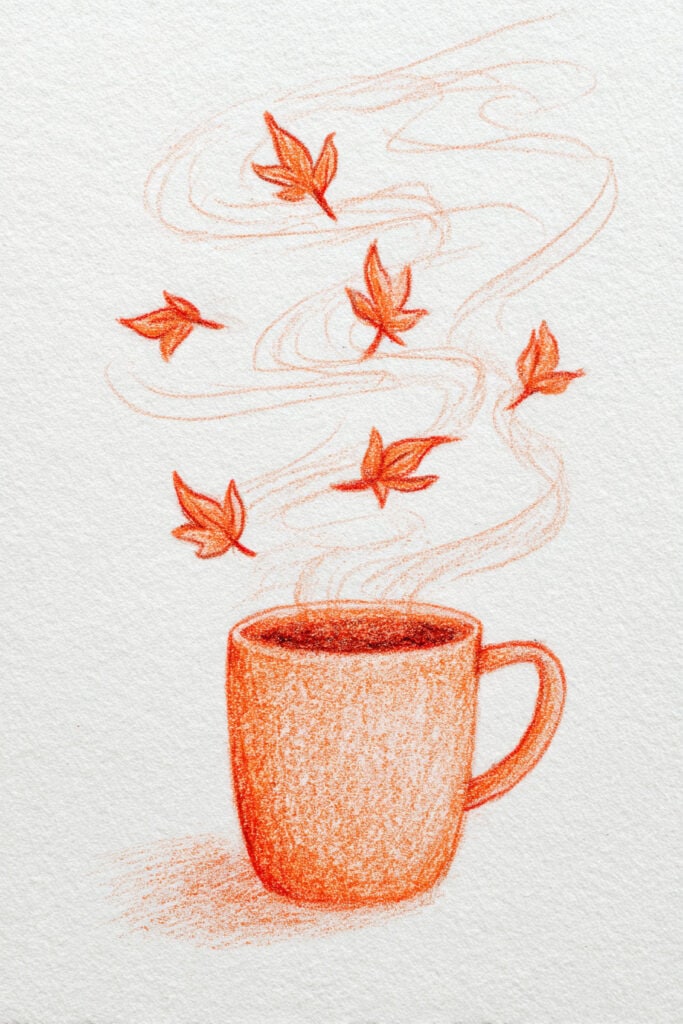
Cozy Candle & Books
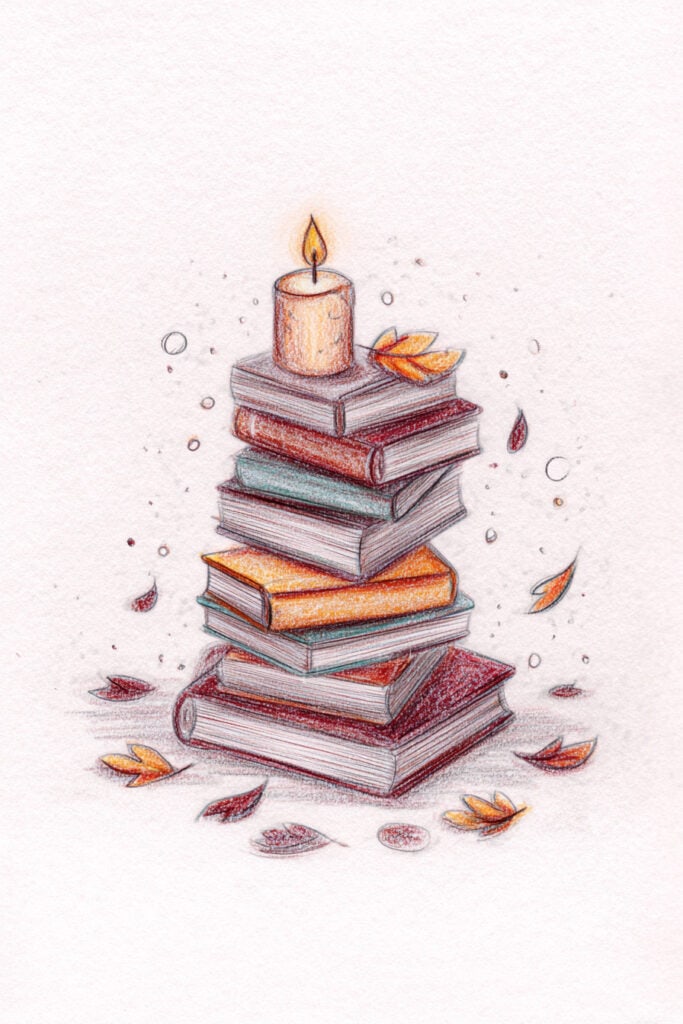
Bear Hibernation Prep
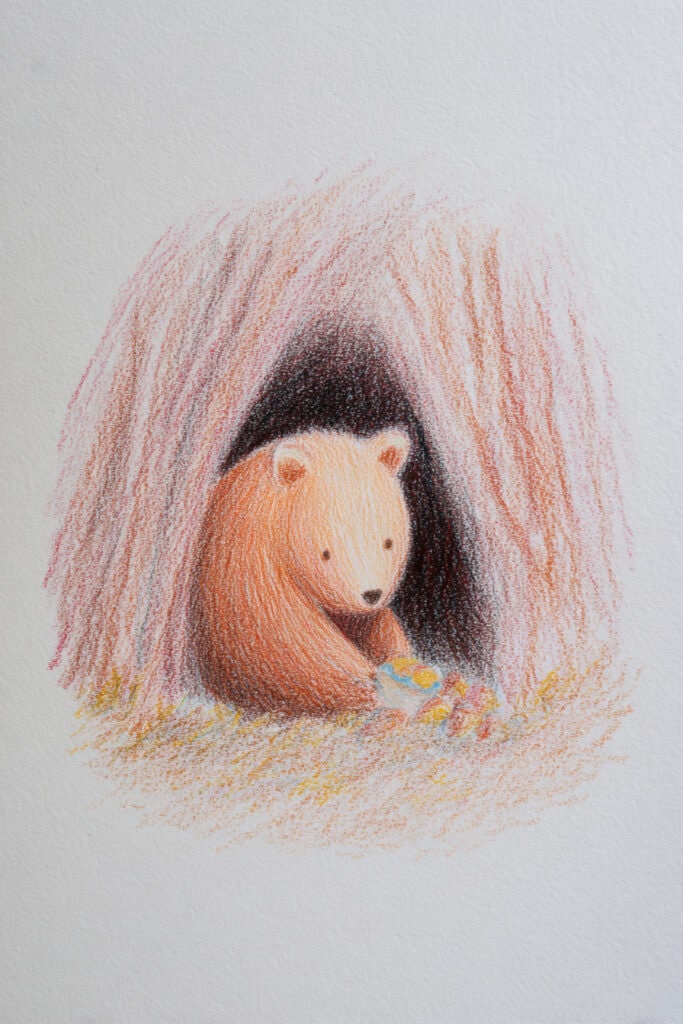
Autumn Wreath Circle
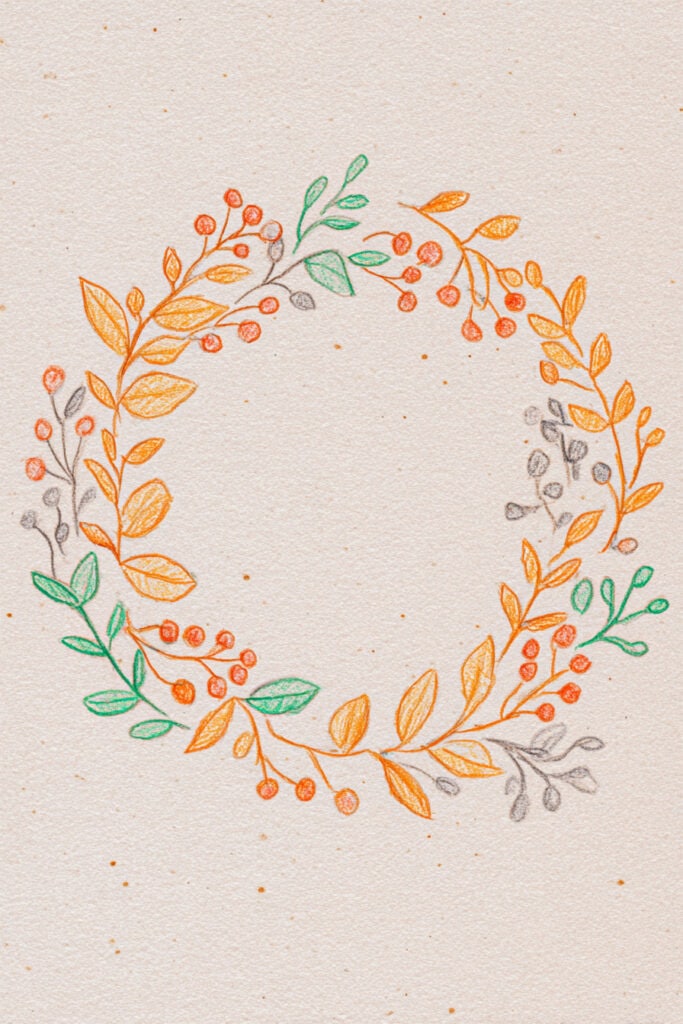
Autumn Rain Boots Puddles
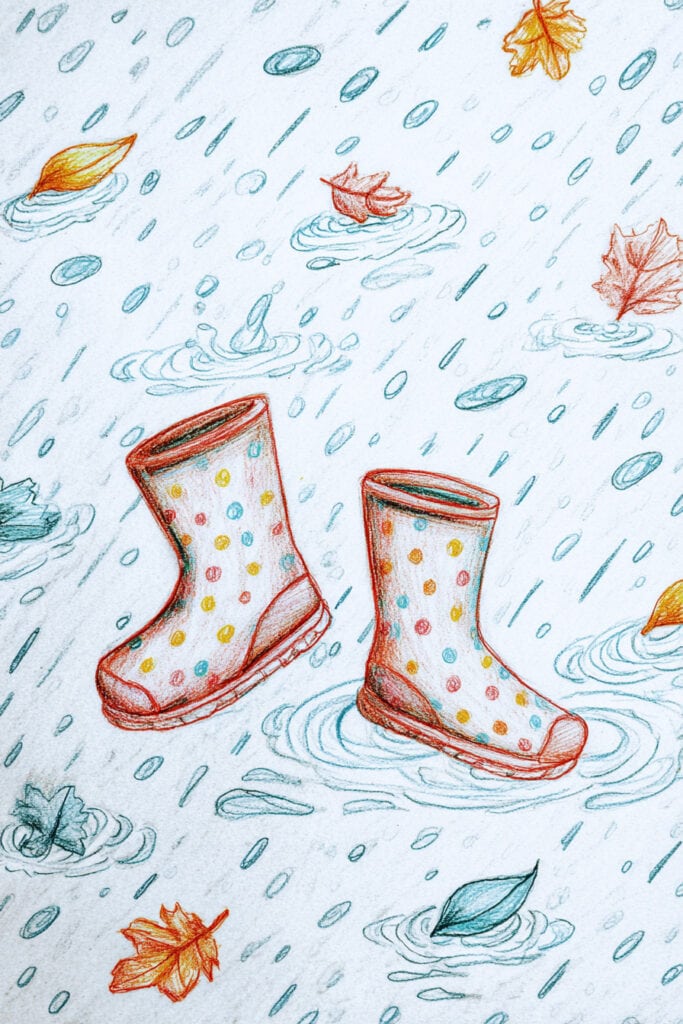
Autumn Pie Slice
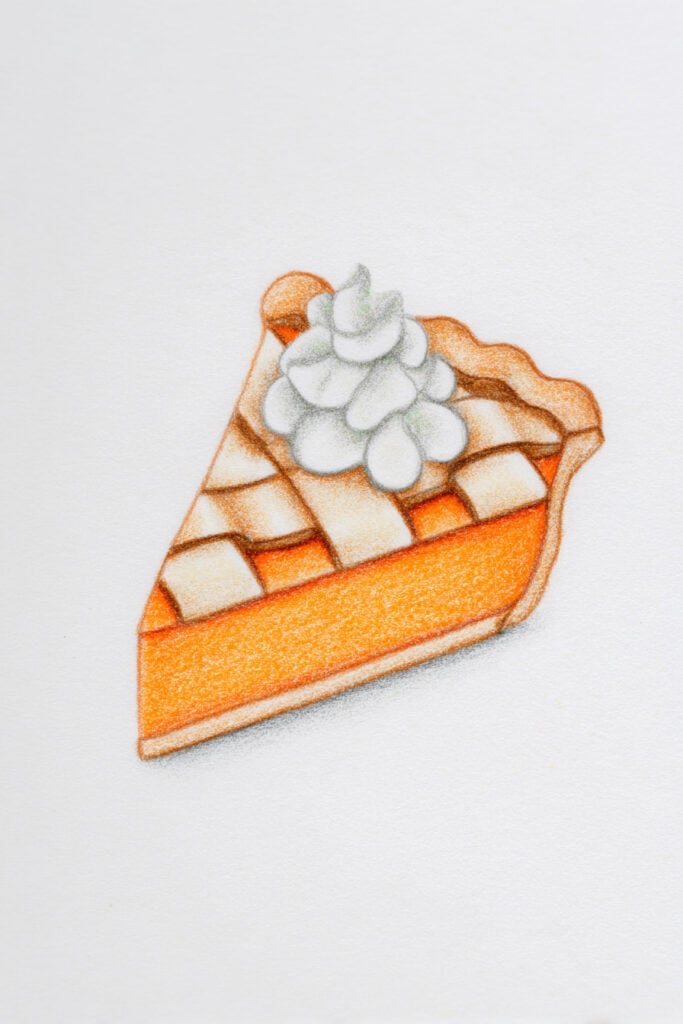
Apple Picking Basket
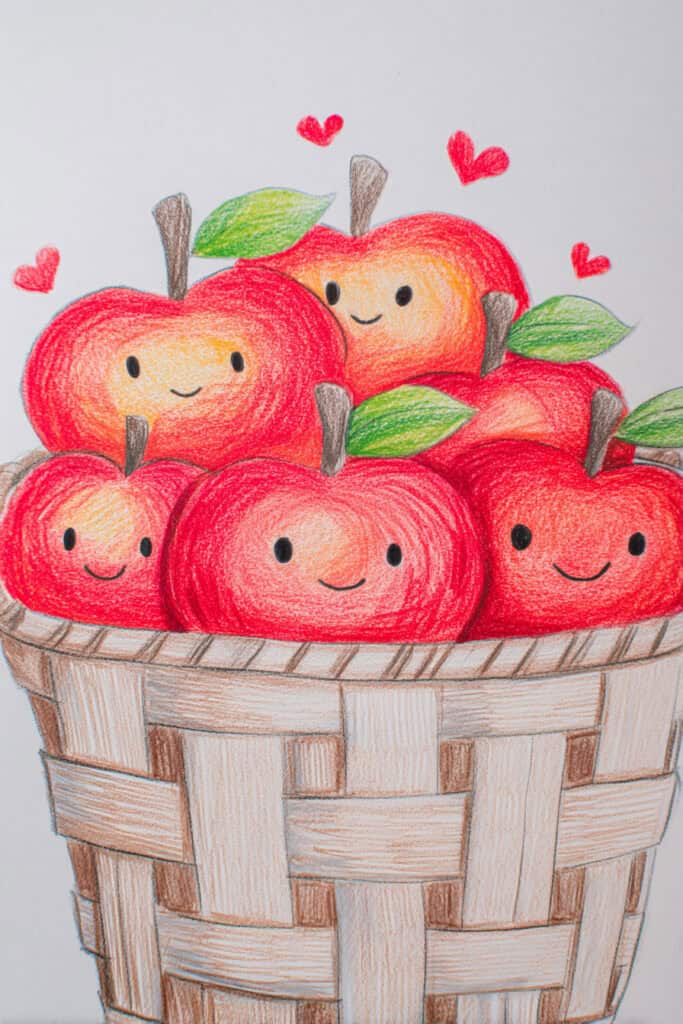
Apple Cider Jug & Glass
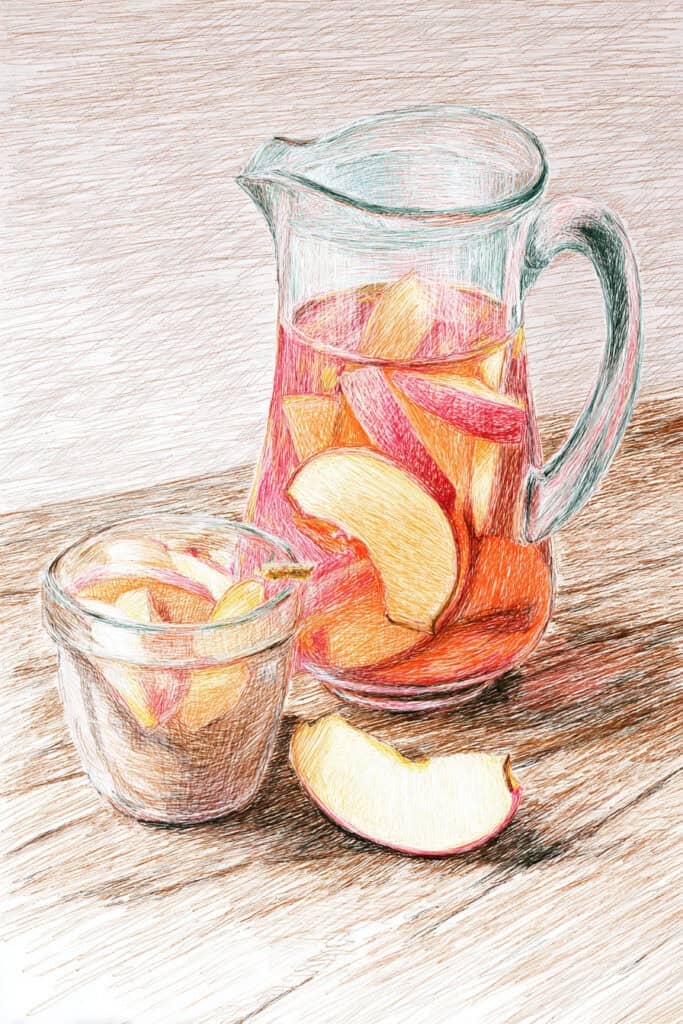
What I Wish Someone Had Told Me About Doodling
Your First Attempts Will Look Like A Five-Year-Old Drew Them That’s fine. That’s how learning works. My first hedgehog looked like a potato with toothpicks stuck in it. My twentieth hedgehog actually looked like a hedgehog. The only way to get from potato to hedgehog is to draw a bunch of progressively less potato-like hedgehogs.
Repetition Is Your Friend Don’t draw one pumpkin and then move on to drawing leaves. Draw like ten pumpkins. Give them different faces, different sizes, different stem angles. By the tenth one, your hand knows what it’s doing. That muscle memory is gold.
Small Is Easier Than Big When you’re starting out, draw tiny. Like, really tiny. Fill your page with dozens of little doodles instead of one big one. Small means low stakes – if it doesn’t work out, it’s just a tiny failure that you can draw right over. Plus, a page full of tiny doodles looks way more impressive than three large, careful drawings.
Simple Beats Detailed Every Time The doodles I’m most happy with are usually the simplest ones. A well-drawn simple pumpkin beats a complicated, overworked pumpkin with shading and texture that doesn’t quite work. Learn to love simplicity. Embrace the humble circle-with-a-face.
Why You Should Fill Entire Pages
Once you get comfortable with individual doodles, try filling an entire page with them. Not in a grid – just scattered naturally, overlapping, different sizes, some turned at angles. This is incredibly satisfying for several reasons:
It looks impressive, even if each individual doodle is simple. A page full of autumn doodles has that “cozy sketchbook” vibe that makes people go “Wow, you’re an artist!” even though you’re just drawing the same pumpkin forty times.
It’s meditative. Put on a podcast or some music and just zone out filling the page. Don’t think about it too hard. Just keep adding doodles wherever there’s space. It’s almost therapeutic.
You’ll accidentally create a style. When you draw the same thing repeatedly, you start developing consistent ways of drawing it. Those quirks become your style. That lumpy way you draw pumpkins? That’s not a mistake anymore – that’s your pumpkin style.
The Permission Slip You Didn’t Know You Needed
Here’s something I had to learn: doodling isn’t wasting time. It’s not something you do “instead of real drawing.” Doodling is real drawing. It’s practicing observation, mark-making, composition, and storytelling in bite-sized pieces.
Those professional artists with the gorgeous autumn illustrations? They all started with wobbly pumpkins and weird-looking leaves. The difference is they kept drawing wobbly pumpkins until the pumpkins got less wobbly. That’s it. That’s the secret.
So grab a pen, draw a circle, add a face to it, and call it a pumpkin. Congratulations – you’re making autumn art. Draw twenty more. Make them all slightly different. Have fun with it. That’s literally the whole process.
K
